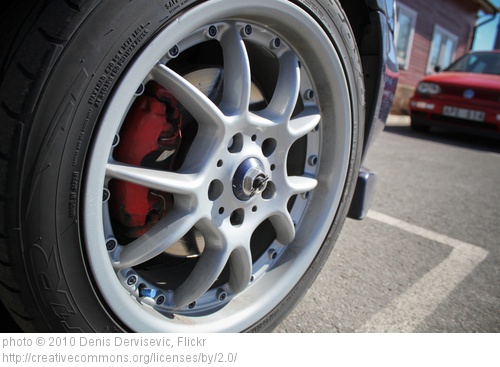 DIY Tip: Check Your Tires’ Air Pressure. I have a friend who once said quite matter-of-factly, “ I never attempt to put air into my car tires because I’m afraid they’ll explode.” Her admission surprised me. My friend is an educated woman, smart and quick as a whip. So at first, I thought this was a little funny…exploding car tires, really?
DIY Tip: Check Your Tires’ Air Pressure. I have a friend who once said quite matter-of-factly, “ I never attempt to put air into my car tires because I’m afraid they’ll explode.” Her admission surprised me. My friend is an educated woman, smart and quick as a whip. So at first, I thought this was a little funny…exploding car tires, really?
This conversation, as funny as it was, really got me thinking. How many women out there share similar concerns, I wondered? I began to ask around, and while no one admitted to a fear of exploding tires, what most did seem to agree on was that they never checked their tires’ air pressure because it just didn’t seem all that important.
The thing is, it IS important, and not only that, it’s very simple to do.
Here are the reasons why:
- Under-inflated tires put you in danger, as tires can heat up and fail, in other words “blow out” (there’s an exploding tire for you)
- Beyond the important safety benefits, properly inflated tires provide better tire wear, adding longevity to your tires’ life, giving you better gas mileage and providing a comfortable ride.
The Good News
Checking your tires’ air pressure is one of the easiest car maintenance tasks you can perform yourself. It doesn’t require costly tools, nor does it take much time to speak of. In fact, the only tool you’ll need is a tire gauge. They sell these in all auto parts stores for just a few dollars. I usually store mine in the glove compartment of my car, for easy access. I check my air pressure at least once a month (this includes the spare) and always before long road trips.
Here is a how-to video on how to check your tires’ air pressure:
Steps for checking the air pressure in your car tires:
1. Check your tires while they are cold, either before you’ve driven, or at least three hours after you’ve driven.
2. Locate your tire’s psi (pounds per square inch). This information is located on a label, inside the driver’s side door. It will clearly indicate the recommended psi for your vehicle’s tires.
3. Remove the cap from the air valve on your tire. Place the appropriate end of the tire gauge on the valve, press the gauge down on the air stem, this will force air into the gauge, remove the gauge. A numbered bar should appear from the back end of the gauge, your car’s tire psi will be indicated on this bar. If the psi reads higher than what the manufacturer recommends, then slowly release air from the tire until the desired psi is achieved. If the psi is lower than the recommended amount, add air until the indicated results are met.
Remember, keeping your tires filled to their proper level promises you a safe, comfortable ride with better gas mileage and better tire longevity. Happy trails!
BY LEAH BOLDEN, SEE JANE DRILL







Leave A Comment